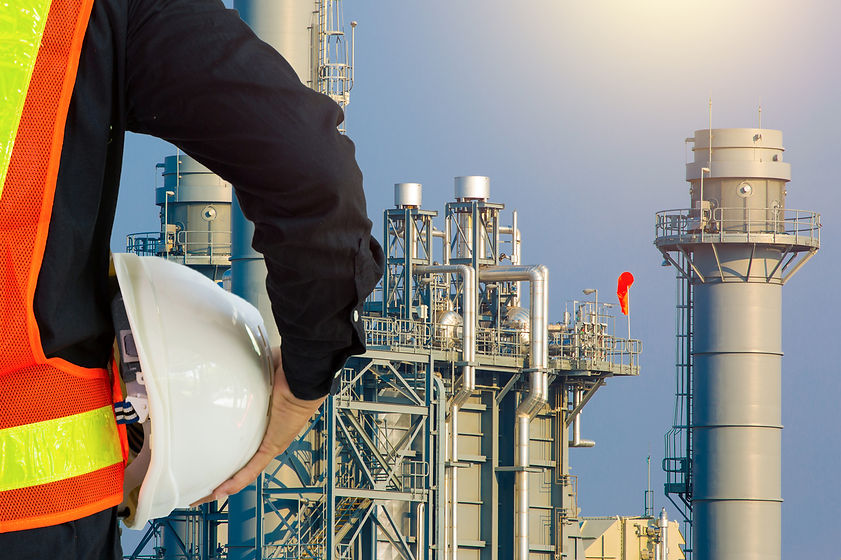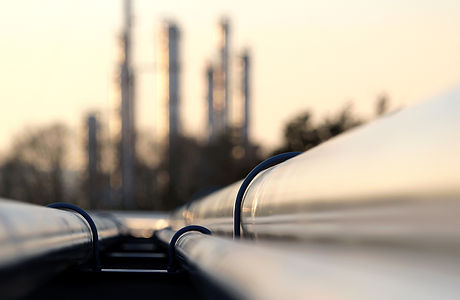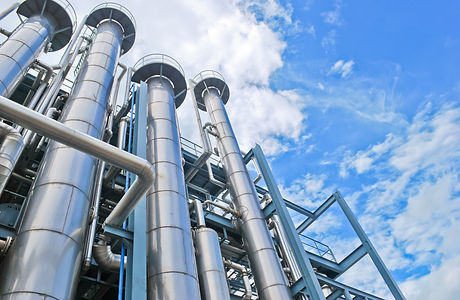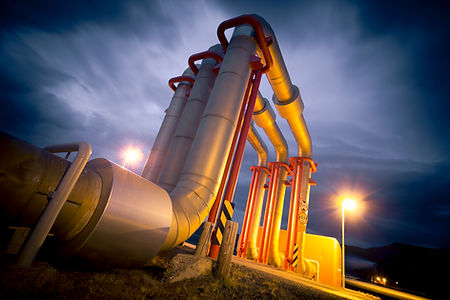
OUR PROJECTS
Representative projects detailing our expertise in compliance and solutions

Petroleum Pipeline Client
Air Monitoring Solution
CFR provided a cost-savings solution for a petroleum pipeline client, eliminating the need for an additional costly closed vent or chiller system. The client operates a nearly 2,000 mile pipeline that transports light condensate from a terminal in the Midwestern United States to Western Canada. The condensate is used as a diluent for heavy oil being extracted from tar sands.
The condensate is stored in above ground internal floating roof (IFR) tanks prior to being put into the pipeline to Canada. The incoming condensate is extremely volatile and there was a concern that during summer months the true vapor pressure (TVP) may exceed the 40 CFR Part 60 (NSPS), Subpart K(b) limit of 11.1 psia for storage in a floating roof tank. The pipeline company was preparing to replace the internal floating roofs with a costly control system.
After a thorough review, CFR offered a solution. We were aware that EPA regulations also allowed for the estimation of TVP using ASTM D2879, which would eliminate the RVP bias. CFR requested TVP testing for the incoming condensate at several temperatures using ASTM D2879. CFR was then able to generate vapor pressure constants by a linear regression of the log-transformed data thereby developing a TVP vs. Temperature curve. TVP can now be accurately predicted and the temperature that the TVP would reach the regulatory limit of 11.1 psia.

Hot Asphalt Supplier
Air Emissions Calculation Tool
CFR developed a customized air emissions calculation software solution for a a large hot mix asphalt supplier that operates throughout several midwestern states. The asphalt supplier is required to file a variety of environmental reports, including annual state air pollution inventories and TRI (Form R) reports. Historically, the client had relied on U.S. EPA’s TANKS 4.09d emissions software to estimate both criteria and hazardous air pollutants emissions from the storage of asphalt. But there was a problem with the EPA software.
Since its release, the U.S. EPA has discovered calculation and data errors in TANKS. Based on these errors, the agency elected to stop supporting the software. Users and state agencies had little choice but to use the EPA software anyway to estimate air emissions. Because the EPA stopped supporting the TANKS 4.09d software, it has become unusable for anyone that upgraded their computer to use the Windows 10 operating system.
The client, like most companies that have upgraded to Windows 10, has found themselves in a difficult position with no practical way to estimate air emissions. CFR stepped in with a software solution for the client, the CFR-Emissions Calculation Software, which is compatible with Windows 10. CFR went one step further and integrated the calculation software into the client’s existing air emission inventory workbooks.

Immediate Response
Storm Water Spill Control
CFR provided on-site support for a manufacturing company in the Grand Rapids, Michigan area that encountered a hydraulic oil release. During a manufacturing test run, a hydraulic hose failed causing a release of a large volume of hydraulic oil onto the ground. The plant manager immediately called CFR for a quick response. CFR deployed rapidly and was on-site within 30 minutes. Through annual training provided by CFR, facility employees knew to deploy spill control equipment to prevent oil from entering the storm sewer.
The hydraulic oil was removed and a hydrocarbon storm drain filter was installed to prevent any oil from being discharged. The cleanup and conservative approach to installing a drain filter was successful. Following a large rain event weeks later, the facility removed the storm drain filter after it was determined that oil was not present in the discharge.

Manufacturing Operation
Industrial Hygiene Indoor Air Quality
CFR provided indoor air quality consulting for a molding operation in West Michigan. The company has a painting operation where employees were complaining of respiratory symptoms.
The client contracted CFR to assess the indoor air quality at the facility to determine compliance with OSHA occupational exposure limits (OELs). Upon completion of the assessment, it was determined that employees were being overexposed to both carbon black and nuisance particulates. As a result of the survey, the company redesigned their ventilation system with the objective of reducing employee exposure to below OELs. In the interim, CFR developed a respiratory protection program that included the selection of proper respirators, fit testing for affected employees, and provided training. After the ventilation redesign, CFR repeated the survey and determined that employees were no longer exposed in excess of the OELs.

Air Emissions Compliance
Energy Pipeline
CFR was approached by one of the largest petroleum distribution companies in North America. CFR can calculate your air emissions for operations that require emissions to be inventoried. Our engineers a use an in-house state of the art computer program to calculate emissions. We calculate emissions for a variety of customers, from small businesses to clients that are deemed a major source by the EPA.

Air Emissions
CFR-E Software
The EPA's TANKS emissions software 4.0.9d is outdated and no longer a reliable source for calculating air emissions. Much of the industry relied on this tool for calculating air emissions for their chemical and petroleum storage sites and no longer have an accurate, reliable way of doing so. CFR Environmental has created a software using AP-42 that calculates air emissions from the storage of bulk organic liquids. Learn More here

Compliance Audit
Health & Safety
An international specialty chemical (rare earth) manufacturer was experiencing huge growth due to the influx of raw material from China. The company was also the subject of an OSHA audit which didn't go too bad, but the company now "knew what it didn't know" and realized that the development of an effective health and safety program was a prerequisite for their continued success. Unfortunately, the company did not have any internal expertise in putting together such a program. CFR was able to assist the client by first conducting a regulatory audit to establish a baseline. The format of the audit was to examine each regulation, determine how the regulations may be applicable to the facility, and make a brief statement as to compliance based upon the gathered field data.

Permitting and Compliance
Storm Water
Most industrial facilities require a permit to allow it to rain or even for snow to melt. The water that does not soak into the ground becomes surface runoff, which either flows directly into surface waterways or is channeled into storm sewers, which eventually discharge to surface waters.
Stormwater permits require that facility develop and implement Best Management Practices (BMPs) to ensure stormwater run-off does not degrade surface water quality. CFR will acquire a stormwater permit for your facility and develop a storm water pollution prevention plan (SWP3) and provide training, sampling and inspection services.
